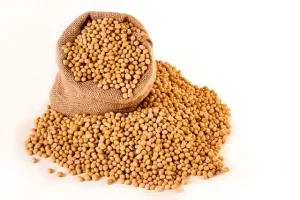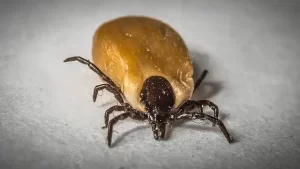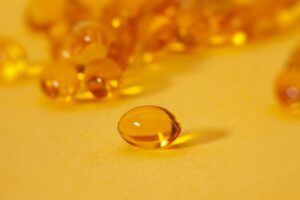Biosimilar Trastuzumab: Rapid development and scale-up
- Engineered Soybeans with Pig Protein: A Promising Alternative or Pandora’s Dish?
- Severe Fever with Thrombocytopenia Syndrome (SFTS): A Tick-Borne Threat with High Mortality
- Why Isolating Bananas Extends Their Shelf Life?
- This common vitamin benefits the brain and prevents cognitive decline
- New report reveals Nestlé adding sugar to infant formula sold in poor countries
- Did Cloud Seeding Unleash a Deluge in Dubai?
Biosimilar Trastuzumab: Rapid development and scale-up
- Red Yeast Rice Scare Grips Japan: Over 114 Hospitalized and 5 Deaths
- Long COVID Brain Fog: Blood-Brain Barrier Damage and Persistent Inflammation
- FDA has mandated a top-level black box warning for all marketed CAR-T therapies
- Can people with high blood pressure eat peanuts?
- What is the difference between dopamine and dobutamine?
- What is the difference between Atorvastatin and Rosuvastatin?
- How long can the patient live after heart stent surgery?
Biosimilar Trastuzumab: Rapid development and scale-up. Rapid development and scale-up of biosimilar trastuzumab: cell line and process development case studies.
Compared with new drugs, the development of biosimilars faces a lot of preliminary work from cell lines to first in human (clinical trial) (FIH).
The biosimilar development plan requires rapid preclinical and phase 1 studies, and usually does not require phase 2 studies because the original original drug has already established the dose and other patient treatment concepts.
Phase 3 clinical studies are usually limited to fewer patients, which ultimately reduces overall time and R&D costs.
The key challenge remains: to prove comparability and high similarity based on in-depth analysis, as outlined in many guidance documents of the European Medicines Agency (EMA), the US Food and Drug Administration (FDA) and the World Health Organization (WHO) Like that.
Compared with the original product, early development usually requires multiple iterations.
Therefore, when looking for suitable preclinical and clinical production candidate drugs, a comprehensive approach must be adopted for cell line development, early screening and process development.
Here, we propose a research method for biosimilar trastuzumab, from cell line to early development, with scalable antibody titers and clinically relevant product quality attributes.
Our research started with the development of a highly expressing Chinese hamster ovary (CHO) cell line expressing the desired target protein.
Although recombinant technology is a powerful tool for expressing biotherapeutics, successful manufacturing depends on stable cell lines expressing high protein titers.
The key part of biopharmaceutical development is to select the right cells to achieve cell productivity, cell line stability and final product quality.
The most common gene expression system is based on dihydrofolate reductase (DHFR) and glutamine synthetase (GS).
However, traditionally, identifying suitable cell lines is a time-consuming and laborious process because their productivity and stability can vary greatly.
Thousands of single clones must be screened to find the clone with the highest yield and best product quality characteristics.
In order to improve cell line selection and reduce development time, we have used more advanced methods to develop stable cell lines.
It is based on the element of DNA that controls the dynamic organization of chromatin in all mammalian cells.
They can release a genetically modified genomic environment, which is a prerequisite for effective gene expression.
It has been shown that this method can prevent transgene silencing and provide a high transcription rate for all copies of the transgene.
Subsequently, we used the shake flask to conduct a design of experiment (DoE) study to determine the minimal medium and feed medium strategy, and confirmed the results with a 2-liter scale reactor.
We further optimized the 2 liter culture process to meet the required product titer and quality. A three-step downstream process was developed to produce high monomer content.
We have successfully extended the process to a process scale with upstream and downstream operations, and have comparable process and product attributes.
Each step of the process is supported by detailed analysis: for example, N-glycan analysis shows comparability and quality, size exclusion chromatography (SEC) and capillary isoelectric focusing (cIEF) and charge changes to confirm quality .
Materials and Method
We used the current CGMP-compliant CHO-K1 ATCC-derived host cell line to grow in CD Growth A medium, which is a commercial chemically defined (CD) medium.
In order to keep the cell culture environment unchanged during the whole process, we used the same medium as the basic medium for transfection, single cell cloning and production.
We integrate genes encoding Hc and Lc and selectable markers into the target vector to maintain the maximum level of transcription.
Figure 1a below is a schematic diagram of the development process we used to establish the cell line used in this study.
DNA is delivered by electroporation to improve transfection efficiency.
We applied antibiotic selection to create a stable cell bank, selected about 100 clones for manual expansion, and expanded from 96-well plates to 24-well and 6-well plates.
Based on the immunoglobulin G (IgG) titer, we transferred the selected monoclonal cells to shake flasks, and then further checked the best performing monoclonal cells during the 14-day fed-batch process.
 Figure 1a: In the cell line development process used in this article, monoclonal screening was performed in a 96-well plate and then manually expanded to a 6-well plate.
Figure 1a: In the cell line development process used in this article, monoclonal screening was performed in a 96-well plate and then manually expanded to a 6-well plate.

Figure 1B: Monoclonal analysis isolated in a 96-well plate.
We can complete these expansion steps without any antibiotic selection, and carefully identify and select the monoclonal that suits our production requirements.
Finally, we collected and tested 10 qualified cloned cell identities and endogenous and uncertain microbial contaminants (bacteria, fungi and mycoplasma).
In order to analyze its expression construct at the nucleic acid level (genetic stability), we evaluated the constructed vector by quantitative polymerase chain reaction (qPCR).
Finally, we chose a single clone for further process development.
Process development and scale-up basic medium selection and feed strategy development:
In order to evaluate a set of commercially available cell culture media with different feeding options, we conducted a basic media screening study.
In order to evaluate the medium type, total feed volume, feed duration, and temperature changes of the basal medium and the feed medium, we conducted 14 shake flask studies with 100 mL working volume (WV). Then we inoculated 12 shake flasks to further optimize the feeding strategy.
In order to monitor the cell growth and viability in the shake flask, we used an automatic cell counter. In order to monitor metabolites, we use a multifunctional cell culture analyzer.
We collected titer samples on the 3rd day, and then every day on the 5th day, and finally harvested the flasks when the cell culture viability reached 60% viability.
Cell culture process development:
To further evaluate and confirm the process parameters, such as temperature changes, pH and glucose levels, we ran two sets of four 4L-scale bioreactors and evaluated two different temperature change conditions (34°C and 32°C).
When the glucose drops below 3g/L, the feed volume can reach 4g/L; the sodium bicarbonate-carbon dioxide system is used to control the pH. The system controls the dissolved oxygen (DO) at a set point of 40% with a fixed air flow rate and O 2 (on demand).
We defined the feeding strategy, total feeding amount and feeding duration based on the results of the shake flask study.
For seed culture, we pass the cells approximately every three days. For the last seed culture passage (n-1) before inoculating the bioreactor, we expanded the cells in a Wave bioreactor equipped with a temperature control device. Figure 2 below shows this process.
 Figure 2: Cell culture process design for 2L and 20L studies.
Figure 2: Cell culture process design for 2L and 20L studies.
We sample the culture daily to measure cell density, viability and metabolite levels. After the third day, we take samples every day for analysis (including titer and quality attributes).
When the cultured cell viability reaches 60% viability, the bioreactor is harvested.
Through an aseptic process, we collected the cell culture supernatant and centrifuged, and then filtered the supernatant through a 0.2µm filter.
Collect the filtrate and store it in a refrigerator at -80°C for downstream processing.
Scale up of cell culture process to pilot scale:
In order to prove the scalability, we scaled up the 2L process to 20L. We used a stainless steel bioreactor for a 20L bioreactor operation.
The system maintains the scale-independent parameters (pH, pCO2, feeding strategy, temperature changes, etc.) studied in the cell culture of the 2L bioreactor.
The scale-related parameters are scaled appropriately. We designed the air flow rate to be a constant volume per minute (vvm) and converted to 0.15 standard liters per minute (SLPM) using a ring nozzle.
The increase in stirring speed is based on the constant power (P/V) per unit volume of fluid, converted to 100 rpm.
Downstream development and scale expansion:
We have developed and expanded the three-step purification process to meet the requirements of our 20-liter scale bioreactor operation.
The downstream process starts with the use of a depth filtration system to clarify the cell supernatant, and then performs chromatography on the chromatography system.
The protein A capture step uses protein A resin, equilibrates with phosphate buffered saline (PBS), then loads the sample and rinses with PBS. After a second rinse with PBS and 1M sodium chloride, we performed a final rinse with PBS, and then eluted the protein with 50mM sodium acetate with a pH of 3.4.
After the virus inactivation step, the intermediate sample solution was adjusted to pH 5.0. Next, cation exchange (CEX) chromatography was performed in cation-elution mode, using cation chromatography media, equilibrated with 50 mM sodium acetate, and then eluted with 4CV at pH 5.0.
Then use 20CV for gradient elution with 75 to 270mM sodium chloride. Then, the purification is anion exchange (AEX) chromatography, using an anion resin in flow-through mode, with a pH of 7.8-8.0, and elution with 3CV.
Finally, we first process the eluate through the virus-removing filter, and then perform the ultrafiltration (UF/DF) operation in the ultrafiltration system.
 Figure 3: Downstream process design for 2L and 20L studies.
Figure 3: Downstream process design for 2L and 20L studies.
Analysis and development:
Table 1 below shows a typical analysis strategy in the early development process. For the current proof-of-concept research, we considered some of the following methods.
Results
We prepared a research cell bank (RCB) from selected single clones. Figure 4 below shows the results of our initial shake flask media selection.
These results helped us determine the basic medium (medium A) and supplement medium (feed B) with temperature change (TS), which provided the best in terms of viable cell density (VCD) and viability during operation Culture conditions.
 Figure 4: Medium selection with temperature changes (left); medium selection without temperature shift (right)
Figure 4: Medium selection with temperature changes (left); medium selection without temperature shift (right)
The optimization results of our feeding strategy (Figure 5 below) show that there is a non-linear relationship between the total feeding percentage and potency.
A higher percentage of total feed seems to be beneficial to increase expression by 16-20%. However, beyond this point, adding feed does not significantly increase the expression level.
According to the statistical analysis using the software, the best titer results can be obtained from the daily feeding from the 3rd day to the 18th day.
 Figure 5: The effect of feeding time and frequency on antibody titers.
Figure 5: The effect of feeding time and frequency on antibody titers.
A temperature drift study using a 2L bioreactor showed that at 34°C, cultured cells can reach a higher VCD, but compared with 32°C, the decline in viability is greater and earlier.
The results between the two repetitions are consistent, although a change in growth rate was observed in one run (Figure 6 below).
According to the protein A HPLC expression measurement, the cell culture performance at TS to 32°C is slightly higher than the cell culture performance at TS to 34°C.

Figure 6: Comparison of the effects of temperature changes (TS) from 37°C to 32°C and 34°C on viable cell density, cell viability and expression titer.
We studied the combined effects of pH dead zone and glucose control to establish a 2L process, which we labeled as a “golden batch”.
Maintaining a pH higher than 6.8 will result in a higher cell growth rate and a higher VCD peak, but the survival rate will soon drop to 60% or less.
In contrast, maintaining pH>6.6 will result in cell culture with reduced VCD, but the survival time will be extended by >60%.
In order to obtain a higher cell density while ensuring a longer lifespan, we set the pH dead zone to 6.8-7.2, and according to the TS standard, the cell density reaches 1×106 cells/mL.
In order to minimize the alkali consumption of pH control, we increased the pH dead zone after TS to 6.6-7.2.
Under the same pH conditions, the VCDs of cultures controlled at a lower glucose level (about 1g/L) were lower than the highest VCDs at 4g/L.
Therefore, we decided to maintain the glucose level at 4g/L.
Results of process scale expansion:
As shown in Figure 7 below, although the expression of 20L tends to be stable at about 2g/L, the metabolic curve of the 20L scale process has advantages compared with the 2L scale process.
The decline rate of the 20L process is slow, so the titer exceeds 2.5g/L.
 Figure 7: Cell culture process amplification; (a) viable cell density and viability, (b) expression level, (c) glucose profile, (d) lactate.
Figure 7: Cell culture process amplification; (a) viable cell density and viability, (b) expression level, (c) glucose profile, (d) lactate.
We assume that it may be necessary to increase the mixing speed (P/V) and slowly add feed medium and glucose to reduce the variability of pH, feed and glucose control.
To test our hypothesis, we tried a slow bolus of feed medium and glucose addition, and increased the stirring speed.
As part of the expansion confirmation, we carried out an additional 2L culture at the same time and added agitation to adapt to a constant P/V and similar feed addition program.
As shown in Figure 8 below, in all cases, the peak cell density was higher than the previous run, and the expression level of one of the 20-liter runs reached 3.35 g/L.
Although the second round of 20-liter trials is still going on on a similar track, due to the decline in cell viability, we have to harvest the reaction as soon as possible in this case.
A key notable feature of these experiments is the significant impact of controlled feeding strategies on lactic acid during the later cultivation process, in which the metabolism is converted to the consumption of lactic acid.
 Figure 8: Optimized amplification of the cell culture process; (a) VCD and viability, (b) titer, (c) glucose profile, (d) lactate.
Figure 8: Optimized amplification of the cell culture process; (a) VCD and viability, (b) titer, (c) glucose profile, (d) lactate.
We use size exclusion high performance liquid chromatography (SEC-HPLC) to evaluate protein size, capillary isoelectric focusing (cIEF) to evaluate charge variables, and N-glycan analysis for glycosylation analysis to evaluate product quality.
Although the purity was 99.8% after the three chromatography steps, at the end of the UF/DF step, the total purity of monomer and host cell protein (HCP) was 90.05%/0.05ng/mg, and the total product yield was 77% .
Measured by SEC-HPLC, the purity of the biosimilar drug is equivalent to the original drug molecule. Other product attributes (such as cIEF charge variable profile) are also comparable (Figure 9 below).

Figure 9: Compared with the original molecule, the purity measured by size exclusion high performance liquid chromatography (SEC-HPLC) through the 20L experiment and the charge variable measured by capillary isoelectric focusing (cIEF)
Because our monoclonal antibody (MAb) molecule is a biosimilar, according to QbD, its N-glycan profile is an important key quality attribute (CQA) of the design space.
Figure 10 below shows the results of our comparison of N-glycans in the original product (black) and the 20-liter running product.
Obviously, the glycoforms present in the original drug molecule are also present in the antibodies we produce. This glycosylation is reproducible and consistent in multiple cultures.
 Figure 10: Comparison of N-glycans from the original product (black) and 20L culture (blue).
Figure 10: Comparison of N-glycans from the original product (black) and 20L culture (blue).
The relative fucosylation content of the two products is also comparable (Figure 11 below).
This is another important CQA of MAbs (such as trastuzumab), which has biological activity due to its binding affinity to Fcγ receptors on effector cells and clearance by antibody-dependent cell-mediated cytotoxicity (ADCC) activity Target cell.
However, there seem to be fewer capped galactosylated glycoforms in biosimilars, and G0 seems to be relatively abundant than in the original drug.
Further iterative development is underway to improve comparability and similarity by using different medium supplements.
Other characterizations of the original drug molecules are needed to help us understand the batch-to-batch differences of biosimilar monoclonal antibodies.
 Figure 11: Relative sugar content from two different 20-liter bioreactor runs; for the original drug and the 20-liter bioreactor, both the aglycosylated and fucosylated sugars are comparable.
Figure 11: Relative sugar content from two different 20-liter bioreactor runs; for the original drug and the 20-liter bioreactor, both the aglycosylated and fucosylated sugars are comparable.
A successful platform
We have proven that integrated cell line development work, process development and scale-up are successful models for accelerating the early development of biosimilar antibodies.
Our method does not compromise the scientific method based on DoE, but it has carried out a series of targeted experimental research to meet the needs of product quality and process amplification.
The method has been successfully demonstrated using the biosimilar trastuzumab as a model molecule, and has been expanded from a 2-liter benchtop scale to a 20-liter pilot scale process, which can be extended to larger GMP operations for clinical use Sample production.
Common analysis abbreviations for monoclonal antibody characterization:
- CD: circular dichroism
- CE: Capillary Electrophoresis
- CE-SDS: Sodium Lauryl Sulfate Capillary Electrophoresis
- cIEF: Capillary isoelectric focusing
- DSC: Thermal Differential Scanning Method
- ELISA: enzyme-linked immunosorbent assay
- FL-HPLC: high performance liquid chromatography, fluorescence detection
- GC: Gas Chromatography
- HPLC: high performance liquid chromatography
- iCE: Immunoaffinity Capillary Electrophoresis
- ICP-MS: Inductively Coupled Plasma Mass Spectrometry
- IEX-HPLC: ion exchange high performance liquid chromatography
- IgG: Immunoglobulin G
- LAL: am amoebocyte
- LC-MS: Liquid chromatography-mass spectrometry
- PCR: polymerase chain reaction
- RP-HPLC: reversed-phase high performance liquid chromatography
- SDS-PAGE: sodium dodecyl sulfate polyacrylamide gel electrophoresis
- SEC-HPLC: size exclusion high performance liquid chromatography
- UV-A280: 280 nm absorption ultraviolet spectrum
~~~ Biosimilar Trastuzumab: Rapid development and scale-up ~~~~
(source:internet, reference only)
Disclaimer of medicaltrend.org
Important Note: The information provided is for informational purposes only and should not be considered as medical advice.



